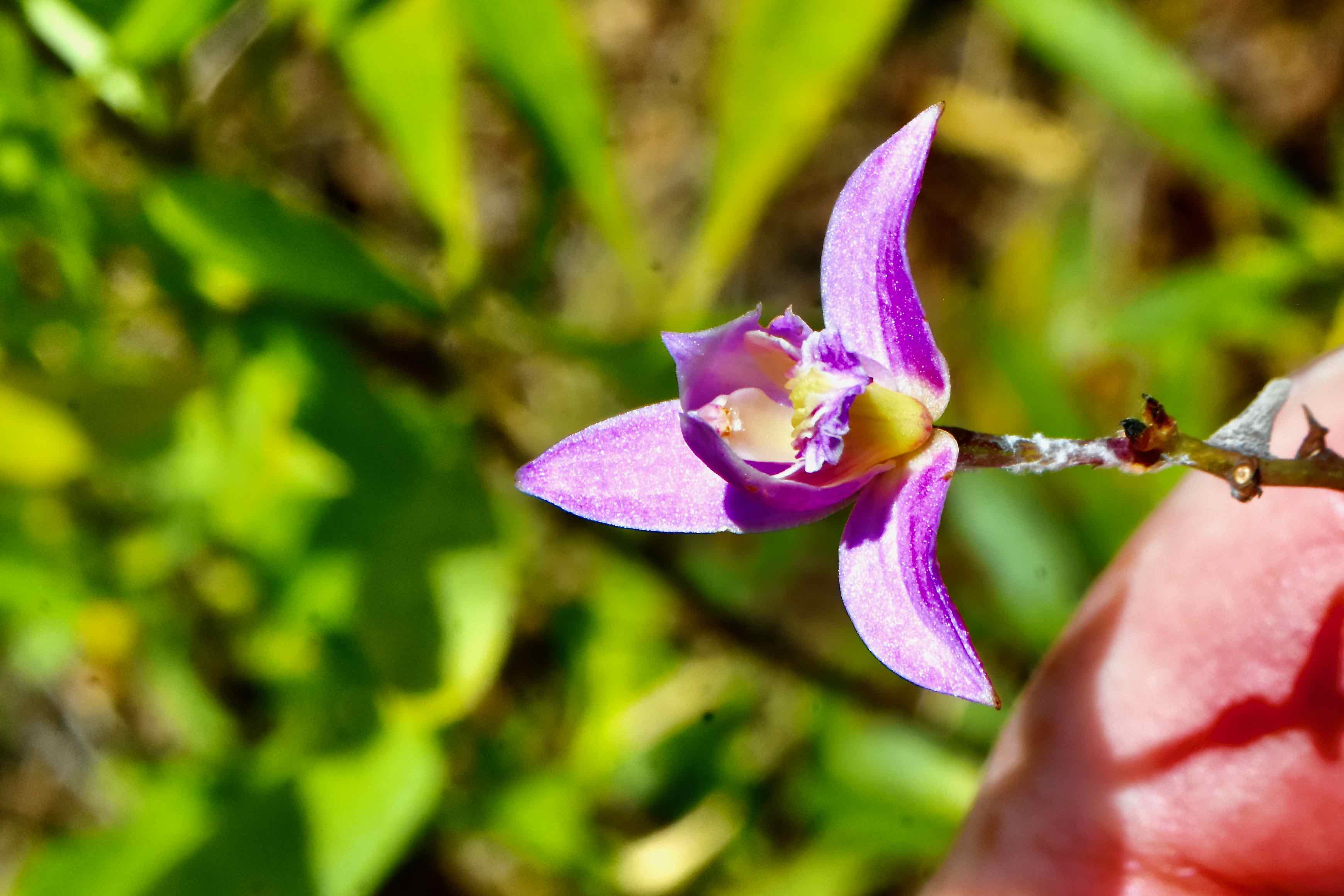
Pine pink, photographed at Fakahatchee Strand Preserve State Park, Copeland, Collier County, in May 2022.
Warning to any bees reading this: stay away from pine pink, Bletia purpurea. Those brilliantly colored and spectacularly elaborate blooms have nothing to offer as you expend energy buzzing from one flower to another, spreading their genetic material in the process.
You won't find so much as a single sip of the sweet stuff. Those lovely flowers are just a ruse.
Like many orchids, pine pink is “food deceptive,” meaning it looks like it should have nectar — the purpose of a plant expending so much energy into their flowers isn't to please our eyes, but rather to attract pollinators — but doesn’t. It’s nature’s version of a practical joke. You can imagine a bee going from flower to flower looking everywhere for the pay off but not finding it.
On top of that, pine pink doesn’t necessarily need pollinators in order to reproduce. Some of the flowers it puts out are cleistogamus — they won’t fully open but will self-pollinate and produce seeds regardless.
Many of these food deceptive orchids are considered rare, including pine pink. Some scientists believe that rarity is actually part of their survival strategy, that if they were common, bees and other pollinators would catch on to the game and stop visiting the orchids. In any case, pine pink is a Florida native mostly found in the southern end of the Peninsula roughly from Palm Beach and Lee counties into Monroe County and the lower Keys. Florida is the sole state where pine pink is found, but it’s also native to parts of the Caribbean, Mexico, Central America and South America.
Pine pink is state-listed as threatened. The Institute for Regional Conservation in Delray Beach considers it rare. However, pine pink is considered “globally secure” because of its wide natural range.
Pine pink is a terrestrial orchid, meaning it grows on the ground, found in damp habitats, including moist pinelands and hammocks. It’s also found within swamps growing on longs, stumps and on the base of cypress trees above the water line. It prefers places with a lot of sun.
It has grass-like leaves that grow from its base, each six to 18 inches long and with a “crease” in the middle. It blooms mainly from December to early summer, but it can produce flowers sporadically year round. Peak season can vary by location.
The flowers range in color from the namesake pink to “rosy purple” to deep purple, and appear on a raceme or flower stalk that can reach three-and-a-half to five feet in height. The stalk can be branched and can have numerous flowers.The sepals — the outer part of the flower — spread open; the petals are erect. It has a gold crest on the lip, a modified petal that serves as a kind of landing strip for pollinators.
Pine pink is cultivated and used in restorations, natural landscapes and wildflower gardens. It prefers full or part sun and requires moist to wet soils.
Bletia honors Don Luis Blet, an 18th century Spanish military pharmacist and botanist who explored South America. Two of his companions on the trip came up the name Bletia, to honor their friend in 1784. There are some 30 members of genus, all orchids and mostly terrestrial. Purpurea is Latin and refers to the purple or red color of the bloom.
Other common names for pine pink include purple bletia and sharp-petaled bletia. Other spellings we’ve seen include pinepink and pine-pink. It is a member of Orchidaceace, the orchid family.
Photographs at Fakahatchee Strand Preserve State Park and Loxahatchee Slough Natural Area
.



